|
|
General: CATEDRAL METROPOLITANA DE BUENOS AIRES MADELEINE PALAIS BOURBON PARIS
Choisir un autre rubrique de messages |
|
Réponse |
Message 1 de 63 de ce thème |
|
Catedral metropolitana de Buenos Aires
La Catedral Metropolitana de Buenos Aires (de la Santísima Trinidad) es el principal templo católico de Argentina. Se encuentra ubicada en el barrio porteño de San Nicolás, en la intersección de la calle San Martín y la avenida Rivadavia, en frente a la plaza de Mayo.
 Plano del conjunto catedralicio.  Catedral Metropolitana de Buenos Aires, Mausoleo de San Martín.
Cuando Juan de Garay llegó desde Asunción a fundar la ciudad de la Trinidad el 11 de junio de 1580, destinó para la iglesia mayor el mismo cuarto de manzana que ocupa hoy en día la catedral. En el acta de fundación se lee: "hago y fundo en el asiento una ciudad la cual pueblo con los soldados y gente que al presente he traído para ello, la iglesia de la cual pongo por advocación de la Santísima Trinidad, la cual sea y ha de ser iglesia mayor parroquial". En lo que atañe a la jurisdicción eclesiástica, la nueva ciudad dependía de la diócesis del Río de la Plata, creada por Paulo III el 1.º de julio de 1547 con sede en Asunción.
 Vista nocturna de la Catedral Metropolitana de Buenos Aires
Pasaron cuatro años desde la fundación de la ciudad hasta que los vecinos iniciaron la construcción de la iglesia matriz; como encontraron toda la cuadra vacía, la edificaron en el solar que había pertenecido a Juan de Garay, que ya había sido muerto a manos de los timbúes; se trata del solar donde actualmente existe la sede central del Banco de la Nación Argentina, y se terminó de construir en 1587. En 1591 se le cayó el techo, por lo que hubo que reedificarla; obra que se paralizó cuando la Real Audiencia de Charcas ordenó que se mudase al solar correcto. Allí, fray Martín del Barco Centenera levantó una pequeña y precaria capilla, que ejerció como iglesia parroquial con muchas limitaciones; pero al menos estaba en el lugar correcto.1
E
Su sucesor fue el trinitario fray Pedro Fajardo, apostólico y santo prelado, que como es de suponer puso todo su empeño en la conclusión de las obras de la catedral. En carta de 20 de agosto de 1721 comunicaba el obispo al rey que ya se había dado cima a una de las torres y estaba interesado en levantar la segunda.
Pero al año siguiente -1722- la techumbre del templo se iba deteriorando de tal modo, que se temía su derrumbamiento. Enfermo y en cama, el obispo pidió al Cabildo Eclesiástico que se hiciese cargo de la obra. Ya se supone que la primera dificultad que se presentó fue la carencia de recursos económicos. El Cabildo, en tal coyuntura, dirigió un exhorto a los miembros del Ayuntamiento a quien competía, también, poner manos en ese asunto. Pero por un motivo u otro –algunos verdaderamente fútiles- se pasaron dos años sin que se hubiera adelantado nada. Entonces es cuando surge la figura del arcediano Marcos Rodríguez de Figueroa y con él las cosas entraron por la vía recta. A su actividad y celo por la causa de Dios se debe la terminación de la obra de la catedral. Para ese efecto, la real hacienda puso 1.800 pesos y él 3.000 de sus propios haberes; el arcediano consiguió 1.500 del vecindario e hizo un empréstito de 2.500 y 1.000 provinieron del cabildo secular. Se terminó el trabajo de las torres, el arreglo de las naves y el del pórtico; además, en 1725, un tal Tomás Trupp, hizo una donación de 5.000 pesos para las campanas. Esta fue la cuarta catedral.
Al morir Fray José de Peralta, se reunió el Cabildo y eligió vicario capitular al Dr. Bernardino Verdún de Villaysán, una de cuyas principales ocupaciones –y las del Cabildo- fue el mejoramiento de la catedral. Como primera providencia, tanto el vicario capitular como el Cabildo, hicieron traer de Potosí 400 libras de oro y los elementos necesarios para hacer dorar el retablo; luego se ocuparon de blanquear la sacristía mayor, los pilares del cañón principal, de todas sus capillas y del bautisterio. Además de ello, el Cabildo se ocupó en hacer alargar el presbiterio, ensanchar la mesa del altar mayor, cuyo retablo compuso en sus dos caras: tampoco olvidaron los señores canónigos la sala capitular y el archivo, que se preocuparon de ordenar y componer según las normas de la época de tal manera que no sufrieran deterioro los documentos y papeles que en él se habían de guardar. El Cabildo tuvo que sufragar los gastos que traían consigo estos arreglos y adecentamientos. Un vecino de la ciudad, nombrado Agustín de García, donó 500 pesos para el dorado y pintura al óleo del coro principal. Esta fue la quinta catedral.
LAcuarela de la catedral hacia 1817.
La quinta catedral no fue la definitiva pues a las 9 de la noche del 23 de mayo de 1752 se derrumbó una parte de ella y entre las seis y las diez de la mañana del día siguiente se desplomaron, según informe del gobernador José de Andonaegui "las tres bóvedas de iguales naves". El obispo, don Cayetano Marcellano y Agramont informaba al rey que fue preciso "derribarla enteramente por la poca firmeza de las paredes que han quedado y empezar su fábrica desde los cimientos con más solidez y extensión que los de la antigua, que por su cortedad no parecía catedral".
Transcurridos tres años, sin contar con la autorización real y sin haber enviado los planos para su autorización, y con el total apoyo del Cabildo Eclesiástico, empezó el obispo a levantar la nueva catedral, la actual, según los planos de un arquitecto nombrado Antonio Masella, de origen saboyano. El célebre vasco y hombre de empresa Domingo de Basavilbaso, hombre de confianza del obispo y bienquisto de la ciudad, en 1754 se hizo cargo de la tesorería y dirección de la obra del nuevo templo. La nueva catedral, según el plano de Masella, sería de cruz latina, con tres naves y seis capillas laterales a ambas.
 La Catedral hacia 1829, por Carlos Pellegrini.
La catedral se fue edificando con los bienes de la Iglesia y con la cooperación económica del pueblo. Las obras, de a poco, se iban realizando, tanto que en 1758 se pudo inaugurar la llamada nave de San Pedro, la que se halla a la derecha de la puerta de entrada, y también el nuevo bautisterio. Pero, aunque un poco tardía, la ayuda real empezó a llegar en 1760.
Don Cayetano Marcellano y Agramont, que tanto había hecho por la nueva catedral en 1759, tuvo que dejar el gobierno de esta diócesis por haber sido trasladado a la sede arzobispal de Charcas. Su sucesor, el porteño José Antonio Basurco (1760-61) ocupó solo un año la sede bonaerense, pero hizo también su obra contribuyendo a la prolongación del templo al donar el terreno de una casa, contigua a la iglesia, que pertenencia de su hermana, doña María Josefa Basurco, tasado en 7.500 pesos, que pagó de su peculio personal.
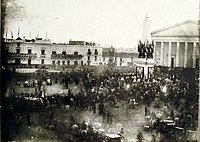 En este daguerrotipo de 1854 se aprecia la catedral aún sin friso.
Una dificultad sobrevino en 1770, en que al detectarse grietas en la media naranja o cúpula, fue necesario proceder a su demolición. Al cabo de siete años las obras tuvieron que suspenderse porque también se había suspendido la ayuda estipulada en 6.000 pesos. En 1778 fue demolido el pórtico porque no concordaba con las proporciones del edificio de la catedral; también fueron demolidas las torres por no estar de acuerdo con el estilo del templo.
Fue el penúltimo obispo de Buenos Aires, don Manuel Azamor y Ramírez, quien puso cima a las obras del templo catedralicio en lo que se refiere a lo principal de él y lo inauguró el 25 de marzo de 1791, treinta y ocho años después de iniciada su reconstrucción en 1753. La catedral fue consagrada en 1804 por el último obispo de la era hispánica don Benito de Lué y Riega, quien se empeñó en agregarle lo que aún le faltaba: el frontis y las torres. Las obras se comenzaron en 1804, pero en 1807 hubieron de suspenderse por falta de numerario.
 La Catedral con su nuevo friso, fotografía de Gonnet, 1864.
Pasados los años, independizado ya el país de España, el gobierno de Martín Rodríguez en la persona de su ministro Bernardino Rivadavia puso un gran interés en la conclusión de las obras de la catedral. Al respecto, se sabe con certeza que las del frontis se comenzaron el mes de enero de 1822. En este punto hay que salir al paso de un error que ha tomado cuerpo. Se dice que el encargado de terminar, el francés Próspero Catelin, al levantar la columnata del frontis se inspiró en la Iglesia de la Madeleine de París. Pero si confrontamos una y otra, constatamos en seguida que en realidad no fue así. En primer lugar, la Madeleine tiene ocho columnas y la catedral de Buenos Aires doce. En segundo término, las obras de la Madeleine se concluyeron el año 1842 y por tanto no podía tomarse como modelo lo que aún estaba por concluir en 1822. Según el arquitecto Buschiazzo más bien parece que Catelin "se hubiese inspirado en el Palais Bourbon, cuya fachada tiene también doce columnas y que acababa de ser terminado por el arquitecto Poyat en 1807". Las doce columnas, número con el que quiso representar a los doce apóstoles, se concluyeron en 1823, aunque sin capiteles y sin las esculturas del tímpano. Las columnas se revocaron tardíamente, en 1862, y ese mismo año, el escultor francés Dubordieu realizó esculturas del tímpano en que representa al encuentro de José y sus hermanos, alusión al encuentro de los argentinos después de la batalla de Pavón en 1861.2 Las columnas son de orden corintio.
 La Curia Eclesiástica, a la derecha de la Catedral (ca. 1920)
En 1856, el Gobierno de Buenos Aires dictó una ley para la construcción de la demorada Curia Eclesiástica. Fue proyectada por Pedro Fossati en estilo italianizante y se edificó en el terreno lindante hacia el este, dejando el espacio del camposanto de por medio. Contaba con planta baja y dos pisos y su interior estaba organizado alrededor de un patio central. Fue concluido por el ingeniero Charles Pellegrini, y habilitado en 1862.
La Catedral fue declarada monumento histórico el 21 de mayo de 1942. Su curia fue incendiada en 1955 en respuesta al Bombardeo de la Plaza de Mayo, que ocasionó más de 308 muertos y alrededor de 800 heridos.3 En 1994, comenzó una intensiva obra de restauración y puesta en valor del templo dirigida por el arquitecto Norberto Silva. La finalización de los trabajos fue celebrada el 13 de octubre de 1999 con una misa brindada por el arzobispo Jorge Bergoglio, a la cual asistió entre otros el presidente Carlos Menem.4
En 2013 en ocasión del Sesquicentenario de la inauguración del alto relieve de la fachada, el Gobierno de la Ciudad junto a los equipos de la Catedral, restauró el pórtico en el marco del Plan Microcentro. Asimismo se inauguró una muestra permanente de Jorge Bergoglio, que fue Arzobispo de Buenos Aires y el encargado de conducir la Arquidiócesis. Allí el visitante podrá encontrar objetos personales y litúrgicos que utilizó durante los 15 años de su ministerio pastoral en la Ciudad.
 Catedral Metropolitana.
En el suelo del atrio, frente a la puerta central, se halla una estrella de ocho puntas, que indicaba el punto de apoyo para la nivelación de la ciudad. En efecto, cuando se efectuó la nivelación de las calles se tomó la altura del peristilo de la Catedral como "Cota 0". Hay que tener en cuenta que a fines del siglo xix el peristilo de la Catedral estaba al ras de la calzada y la altitud de la calle Rivadavia como la de Plaza de Mayo fue rebajada. Esta rebaja ha quedado evidenciada por las cinco gradas de la escalinata que fue necesario agregar al umbral del templo.5 Por decreto del 13 de agosto de 1899 se tomó como nueva cota 0 el nivel del Riachuelo en su desembocadura, y así el antiguo nivel de la Catedral quedó a 19,0081 m arriba del nuevo cero.6
M
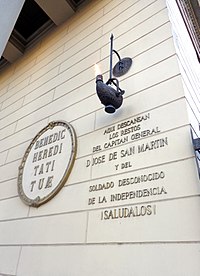 Lámpara votiva en el frente de la Catedral.
La fachada principal, de estilo neoclásico, se inspira en el frontis del Palacio Borbón de París. Fue diseñada en 1822 por los franceses Próspero Catelin y Pedro Benoit.
Consta de un frontis y de doce columnas que simbolizan a los Apóstoles. La ornamentación del frontis y el orden arquitectónico de las columnas fueron definidos por el escultor francés José Dubourdieu. Quién realizó los capiteles corintios y el bajorrelieve del frontispicio, trabajos concluidos hacia 1863. El bajorrelieve representa el encuentro de José con su padre Jacob y sus hermanos en alusión al encuentro de los argentinos después de la batalla de Pavón en 1861.8
La belleza de la construcción neoclásica se encuentra en la composición armoniosa de los escenarios, sin caer en los excesos.9
Su configuración es poco usado en las catedrales, dándole un parecido más cercano a un templo griego –con columnas, arcos, frontispicios triangulares– que al clásico edificio católico.8 Esta configuración exterior, no se condice con la configuración espacial, ni el estilo, del interior.
 Mausoleo del General San Martín en el interior de la Catedral.  Monumento al Arzobispo León Federico Aneiros
Desde la nave lateral derecha se accede al mausoleo que guarda los restos del General San Martín, ubicado en su cuarta casilla, que está allí desde 1880, y que fue obra del escultor francés Carrier Belleuse (inspirado en el eclecticismo francés, que imperaba en Europa en ese momento).
En el interior, la cúpula, el presbiterio, los brazos del transepto y la nave central, fueron decorados por el italiano Francesco Paolo Parisi con unos frescos renacentistas, pero se perdieron a causa de la humedad.
En la capilla San Martín de Tours (ubicada en el ala izquierda) está el monumento al Arzobispo León Federico Aneiros, una obra del escultor Victor de Pol, que es un mausoleo en mármol de Carrara y piedra, con la figura del prelado arrodillado en su centro. Las catorce pinturas del Vía Crucis son obra de Francesco Domenighini, otro italiano, y originalmente se encontraban en la Iglesia del Pilar.
El
|
|
|
|
Réponse |
Message 49 de 63 de ce thème |
|
|
|
|
Réponse |
Message 50 de 63 de ce thème |
|
|
|
|
Réponse |
Message 51 de 63 de ce thème |
|
|
|
|
Réponse |
Message 52 de 63 de ce thème |
|

Marcha 24 de Marzo 2025
El 24 de Marzo se recuerda el inicio de la dictadura cívico militar. Un día para no olvidar.

Marcha a la Plaza de Mayo. Horario, recorrido, actividades, información.
Como todos los 24 de marzo los organismos de derechos humanos junto a miles de personas marchan a la Plaza de Mayo recordando a los 30.000 desaparecidos con la consigna Juicio y castigo.
Para este la año consigna es: "Memoria, Verdad y Justicia para defender la democracia"
El 24 de marzo, fecha del Golpe Militar de 1976, es el Día Nacional de la Memoria por la Verdad y la Justicia.
Fecha: lunes 24 de marzo de 2025.
Horario: desde las 14 hs.
Lugar de encuentro: Av. de Mayo y Av. 9 de Julio.
Lugar del acto: el centro de la marcha es la Plaza de Mayo.
Las organizaciones de derechos humanos, políticas, sindicales y sociales se reúnen en diferentes puntos y marchas por calles y avenidas a la Plaza de Mayo.
Algunos organismo convocantes son: Abuelas de Plaza de Mayo, Madres de Plaza de Mayo Línea Fundadora, Familiares de Desaparecidos y Detenidos por Razones Políticas, H.I.J.O.S. Capital, Asamblea Permanente por los Derechos Humanos, Asamblea Permanente por los Derechos Humanos La Matanza, Asociación Buena Memoria, Centro de Estudios Legales y Sociales; Comisión Memoria, Verdad y Justicia Zona Norte; Familiares y Compañeros de los 12 de la Santa Cruz, Fundación Memoria Histórica y Social Argentina, Liga Argentina por los Derechos Humanos, y Movimiento Ecuménico por los Derechos Humanos.
La columna principal que integran Madres y Abuelas de Plaza de Mayo recorren el largo de la Avenida de Mayo que une la Plaza Congreso y la Plaza de Mayo. Otras organizaciones de derechos humanos, partidos políticos y movimientos sociales ingresar por la Av. Roque Sáenz Peña (Diagonal Norte) y la Av. J Roca (Diagonal Sur).
Cada año esta marcha convoca a miles de personas. La marcha del 24 de Marzo es la más convocante en la vida política y social del país.
Para nunca olvidar
El 24 de marzo de 1976 comenzó la dictadura más atroz y sanguinaria de la historia argentina que duró hasta el año 1983. Durante la dictadura el país fue llevado a una crisis económica y social mientras toda oposición era perseguida. Miles de personas fueron secuestradas por grupos de tareas que respondía a la Junta Militar y llevadas a centros clandestinos de detención con el trágico saldo de 30.000 personas desaparecidas y el robo sistemático de bebes nacidos en cautiverio.
Sitios web con más información:
www.abuelas.org.ar
www.argentina.gob.ar/derechoshumanos
www.madres.org
https://www.buenosaires123.com.ar/marcha-24-de-marzo.html
|
|
|
|
|
|
|
Réponse |
Message 53 de 63 de ce thème |
|
|
|
|
Réponse |
Message 54 de 63 de ce thème |
|
According to Pythagoras an entity is called a number when the product of itself is greater than the sum of itself. One is not a number, according to the above definition, it is god, generator of numbers. Two is also not a number, because both the product and the sum are equal to each other, that is, it is a coexisting god, a second generator of numbers. The numbers start with three because 3 X 3 = 9 an

The Tetraktys is the Essence of Teaching and the Sacred Symbol of the Pythagoreans. It consists of the first ten numbers (1-10) arranged in four rows (one in the first row, two in the second, three in the third and four in the fourth row) as shown in the picture. Tetraktyn was called “Tetradas”[1] which in Pythagorean Philosophy is the essence and meaning of the number four. Tetraktys is the fourth “triangular number”[2] thus showing another view of the relationship of Tetrad and Tetraktyos. In any case, we should not forget the relation of Tetraktys with “Ten”. From this the Tetraktys is mentioned according to Iamblichus with the prepositional names: Cosmos (decoration, ornament), Pan (the god Panas – Pan = All), Uranus, Atlas, Key, Aion, Memory, Gnomon, Eimarmene, Kratos, Phanis, Helios, Pythmen et al. By studying the concepts of numbers found in the Tetractyn and their relationships, the Pythagoreans argue that one reaches the attainment of wisdom.
The main relationship of Tetrad and Tetraktyos can also be seen from the famous relationship of the first four numbers with the ten they produce when added (1+2+3+4=10). From these first four numbers (1, 2, 3 & 4), it is possible to construct the ratios: “by four” (4:3, fourth), “by five” (3:2, fifth), “by all ” (2:1, Octave), which attribute to music the mentioned harmonic musical intervals which Pythagoras was the first to precisely determine with numerical reasons. These proportions create Harmony, which for the Pythagoreans has a literally cosmic meaning (hence its name “Cosmos”). The Pythagoreans used the Tetraktyn to swear, even invoking Pythagoras as a god, as can be seen from the “Golden Epics” where it is stated:
“Yes, with the immortal soul, delivered four times
always of a permanent nature.”
(yes, but the one who delivered to our soul the tetractyn,
which is the source of eternal nature.)
Numbers are related to geometric shapes. Thus the unit is related to the point, the dyad to the line, the triad to the triangle, and the tetrad or tetraktys to the tetrahedron (or triangular pyramid), the first geometric solid. Its symbol was considered the square which was also the symbol of the divine and perfection.[5]. Also wisdom was considered to be acquired from the four esoteric sciences for the Pythagoreans of arithmetic, music, geometry and astronomy. It is a symbol of God Apollo and the Pythagoreans connect the Tetraktyn with the Oracle of Delphi, as seen in the important “hearing” about existence mentioned by Iamblichus[6]: “what is the Oracle in Delphi? Tetraktys” (what is the Oracle of Delphi? Tetraktys).
There is another Tetraktys, as mentioned in Plato’s Timaeus, which is called a double Tetraktys and consists of eight lines created by the first eight numbers (1, 2, 3, 4, 5, 6, 7, which in total give a total of 36 (1+2+3+4+5+6+7+8=36). From another point of view this Quadrilateral is created, and thus connected to the regular Quadrilateral Quadrilateral, by the sum of the first four odd numbers and of the first four integers: (1+3+5+7)+(2+4+6+8)=36 as mentioned by Plutarch in “On Isis and Osiris”.

GOLDEN RATIO Φ ON THE PYTHAGORIAN SYMBOL
PARTHENON WAS BUILT on the PRNICIPLES of PYTHAGORAS
 
The FIRST FLYING MASCHINE was BUILT by the GREEK PYTHAGOEIAN PHILOSOPHER ARCHYTAS in TARANTO(CORINTHIAN COLONY) SOUTHERN ITALY.
For the Pythagoreans, a politician was the person who, after having been taught philosophy, returned to the world to be useful to others.
He is not interested in positions and powers but in the improvement of society.
The one who chose to become a politician could not pass to the stage of a mathematician, that is, one who can deliver lessons and teach.
Those who could had the advantage of living near Pythagoras.
Friendship and companionship were of the highest importance for the Pythagoreans and they considered that universal love was reflected in these two elements.
They were bound by an oath of secrecy over the higher teaching, the ceremonies and the sacred symbols.
Pythagoras offered mankind a universal “successful experiment” for this and later Plato would call education with music and gymnastics!!!!

ONE OF THE BASIC PYTHAGORIAN GROUNDS FOR: ARCHITECTURE, GEOMETRY, MUSIC, STEREOMETRY, ASTRONOMY, HARMONY AND PHILOSOPPHY

WHAT DID PYTHAGORAS SAYABOUT WOMAN=ΓΥΝΗ/GYNE
https://euphoriatric.com/pythagoras-the-nine-muses/ |
|
|
|
Réponse |
Message 55 de 63 de ce thème |
|
Metric Time
Aside from you chronically late people, we all know how time works:

This system is okay. But also, it’s kind of crazy.
Why 60 minutes per hour? Why 60 seconds per minute? It goes back to Babylon, with their base 60 number system—the same heritage that gives us 360 degrees in a circle. Now, that’s all well and good for Babylon 5 fans, but our society isn’t base-60. It’s base-10. Shouldn’t our system of measuring time reflect that?
So ring the bells, beat the drums, and summon the presidential candidates to “weigh in,” because I hereby give you… metric time.

Now, this represents a bit of a change. The new seconds are a bit shorter. The new minutes are a bit longer. And the new hours are quite different—nearly two and a half times as long.

So why do this? Because it’d be so much easier to talk about time!
Here’s one improvement: analog clocks are easier to read. At first glance, the improvement may not be so obvious—we’ve simply reshuffled the numbers a bit.

But notice, the minute hand makes more sense now. When it’s at the 2, we’re 20 minutes past the hour. When it’s at the 7, we’re 70 minutes after the hour. And so on.

Second, times are no longer duplicated. For example, instead of needing to distinguish between 6am and 6pm, we can simply say “2:50” and “7:50.” (This is, of course, how “military time” currently works.)
Third—this is a big one—the time tells you how far through the day you are. The time 2:00 is exactly 20% of the way through the day. At 8:76, we’re exactly 87.6% of the way through the day.

Fourth, consider the moment when we’re 99.9% of the way through the day. In the new metric system, we get to watch the clock roll from 9:99 back around to 0:00. Isn’t that nicer and more conclusive than 11:59pm rolling around to 12:00am?
Fifth, it’s so much easier to talk about longer times. Two and a half days? That’s 25 hours. Three days and 6 hours? That’s simply 3.6 days. Since an hour is now a nice decimal fraction of a day, these conversions become easy.
Will there be adjustments to make? Certainly! But the adjustments are half of the fun.
Let’s start, as all good things do, with television. Whether you enjoy half-hour sitcoms or hour-long dramas, the length of your favorite shows is probably going to change. Why? Because, under our new system, what we now call “half an hour” will be 20.83 minutes. What we now call “an hour” will be 41.67.

There’s nothing magical about these “half-hour” and “hour” lengths, obviously. They were chosen simply because they were nice round numbers. But under the new system, they aren’t! Since it’d be silly to divide the TV schedule into 21-minute intervals, presumably television networks would tweak the lengths to go more evenly into an hour.
If so, they’d have two choices: 5 blocks per hour (i.e., two dramas, plus a sitcom), or 4 blocks per hour (i.e., two dramas).
If you choose the former, shows will be 4% shorter than today, leading to accelerated storytelling. (It’s the same change that’s unfolded over the last 20 years, as increased ad time has squeezed the shows themselves to be shorter.)

And if you choose the latter, shows will be 20% longer. They’ll perhaps unfold at a slower, more cinematic speed. Either way, expect the pacing and rhythm of TV shows to change.
Sports run into the same issue. Football will probably opt for four quarters of 10 minutes each, which shortens the game by 4%. Expect slightly diminished scoring as a result. (And, if we’re lucky, diminished concussions.)

Hockey, meanwhile, might go for three periods of 15 minutes each, which actually makes the game 8% longer. It might give someone a chance to tackle Wayne Gretzky’s scoring records (but then again, probably not—he’s way out of reach right now).

I’d expect soccer to select two halves of 30 minutes each, which (as with American football) shortens games by 4%. If you thought soccer was too high-scoring already, you’re in luck (and also in a very small minority, I suspect).

When it comes to sports, the lengths of games won’t be the only thing changing. We also need to reconsider record running times.
Usain Bolt’s world-record for the 100-meter dash (currently 9.58 seconds) would be, under the new system, 11.09 metric seconds. Doing the 100m in 11 metric seconds might be achievable in the future, but 10 seconds? Perhaps never. (That’s the equivalent of 8.64 of our seconds!)
What about the mile? Well, it’s a little funny to imagine a world with metric time still worrying about that strange unit of distance (5280 feet? Really?), but the famed 4-minute mile would correspond to a 2.78-minute mile.
This is weird because, for top runners in the 1940s and 1950s, the barrier to running a 4-minute mile may have been less physiological than psychological. Would the 2.8-minute mile have felt as intimidating? Would the 3-minute mile? Perhaps it’d be the 2.5-minute mile, seeing as the current world record (3:43 in our old system) is 2.58 metric minutes?

And we might as well mention the marathon, where the world record time (currently 2:02:57) is now under an hour: 85 minutes, 38 seconds. I suspect that the 1-hour marathon would be a real badge of honor, something that every distance runner aspires to.
Leaving sports aside, what about food?
Restaurants would open for breakfast at perhaps 3:00 or 3:50. (Of course, coffee shops like Starbucks might open as early as 2:50.)
You’d get lunch around 5:00—that is to say, noon. Under our current system, I feel silly eating before 11:30, which is 4:80 under the new system. But I wonder—would I feel comfortable grabbing lunch at 4:75? Perhaps even 4:60 (even though that’s earlier than 11am under our current scheme)?

Eating is psychological, and how we number our hours might steer our behavior.
As for dinner, I suspect 7:50 to 8:00 would be the preferred time (although the famously late-eating Spaniards might hold off until 8:75 or 9:00).
Other numbers change, too. Take speed limits: the typical 65mph limit on many highways translates to 156 mph under the new system; I suspect we’d see that bumped up to 160 mph or down to 150 mph for the sake of roundness (which translates to 66.7mph or 62.5mph under our current system).

The speed of sound? Not 340 meters per second any longer; it’s now just 294 meters per second. Meters haven’t changed, of course, but seconds have gotten shorter!
And the speed of light? Unfortunately, we lose the lovely number 300 million meters per second; instead, it becomes roughly 260 million meters per second.
Speaking of light, on the equinox, you get 5 hours of light and 5 hours of dark.
The winter solstice is pretty grim: in London, you’d see just 3 hours, 25 minutes, and 25 seconds of daylight.
The summer solstice is nice, though: London would get 6 hours, 93 minutes of sun.

Okay, time to come clean: I propose this without a single iota of seriousness. It’d be insane to ditch our current system. We’re used to it. We’ve agreed upon it. We’ve built our lives around it. The hassle of a change far outweighs the gains.
But I still love the thought experiment. It asks you, in some small way, to reimagine your life. How do you spend your time? How do you measure the success of a day? When you plan your hours, are you conceding to the arbitrary dictates of a quirky clock, or are you truly giving your tasks the time that they deserve? If I scrambled your sense of time, relabeling all your moments, would it change the way you feel about them? Do the numbers we assign to times matter? Or are we just scratching lines on the shifting dunes of eternity?
https://mathwithbaddrawings.com/2015/04/16/metric-time/
|
|
|
|
Réponse |
Message 56 de 63 de ce thème |
|
|
|
|
Réponse |
Message 57 de 63 de ce thème |
|
Obelix
Obelix (; French: Obélix) is a cartoon character in the French comic book series Asterix. He works as a menhir sculptor and deliveryman as well as one of the primary defenders of the Gaulish village, and is Asterix's best friend. Obelix is noted for his obesity, the menhirs he carries around on his back and his superhuman strength. He fell into a cauldron of the Gauls' magic potion when he was a baby, causing him to be the only Gaul in Asterix's village who is in a permanent state of superhuman strength. Because of this already enormous strength, Obelix is not allowed to drink the magic potion ever again, a ban he regards as being tremendously unfair. Other characteristics are his simplemindedness, his love and care for his dog Dogmatix, his anger when someone refers to him as being "fat", his enthusiasm for hunting and eating wild boars, and beating up Romans. His catchphrase is: "Ils sont fous ces romains", which translates into "These Romans are crazy!", although he considers nearly every other nationality, even other Gauls, to be just as strange.
The character was portrayed by actor Gérard Depardieu in every Asterix live-action film until 2023's Asterix & Obelix: The Middle Kingdom.
Obelix is Asterix's closest friend (they even have the same birthday—although this is inconsistent with the comic Obelix and Co., where only Obelix's birthday is celebrated). He generally works as a menhir delivery man. His passions in life are hanging around with Asterix, fighting, hunting and eating wild boar, making and carrying his menhirs, and beating up Roman legionaries (and occasionally collecting their helmets as trophies). Obelix has a little dog named Dogmatix (Fr. Idéfix), whom he adores. His parents live now in Condate (as seen in Asterix and the Actress) and his distant cousin Metallurgix, a famous golden sickle maker, lives in Lutetia (as seen in Asterix and the Golden Sickle).
Obelix's favourite food is roast wild boar which he usually hunts with Asterix, but he has a voracious appetite, and will try eating nearly anything with few exceptions; in Asterix and Obelix All at Sea and Asterix in Britain he seems not to like boiled boar. In fact, he eats nuts and oysters in the shell, and is completely oblivious to drugs, spicy food and poison, possibly due to the permanent effects of the magic potion. However, when he consumes alcohol, he gets very drunk very quickly, as seen for example in Asterix in Britain where he enjoys sampling different barrels of wine trying to find a barrel containing magic potion, or in Asterix and the Laurel Wreath, where both he and chief Vitalstatistix get drunk during a banquet, much to the shame of the latter's wife Impedimenta. Although he has his own house, Obelix is occasionally shown staying overnight at Asterix's.
Obelix owns the quarry where he chisels the menhirs himself. It is never directly stated what the menhirs are mostly used for aside from being Obelix’s personal blunt weapons. It is hinted that they are also just oversized knick-knacks; however they are probably a running-gag regarding the origins of the mystery surrounding Menhirs in ancient Europe, with the joke being that Obelix delivered them. Obelix usually trades the stones away for whatever he needs, resulting in the village having a literal field of menhirs.
Obelix is kind-hearted, but socially inept—possibly because his strength means that others have had to adapt to him instead of vice versa. He is still not completely aware of his own strength and almost invariably breaks any door he gently knocks on, making him a human battering ram. He is frequently used as a human battering ram for opening locked doors or breaking through walls. Similarly, he is unaware that others do not share his superhuman strength, and shows great surprise when others are crushed by what he calls "a little menhir", or when Asterix attempts to explain to him that a small dog like Dogmatix cannot lift a menhir. He also has little interest in subjects of formal education or intellectual pursuits, since sheer strength usually solves his problems; he generally leaves any decisions to Asterix. However, Obelix is not completely stupid. In Asterix and the Normans he deduces from various clues that Cacofonix the bard has gone to Lutetia to pursue a career in popular music: this unusual display of intelligence on Obelix's part surprises Getafix. He also surprises Asterix in Asterix and the Black Gold by reeling off a dictionary definition of wild boar in conversation (including the Latin taxonomical classification). He can also be quite dangerous when angered.
While cheerfully violent and enjoying a good fight, Obelix is far from brutal or sadistic: he tends to view fighting as a game and is generally friendly and polite (to the point of inappropriate courtesy) towards his opponents. He extends this benevolence even towards the Romans, whom he rarely seems to view as oppressors but more as less-willing participants in his rough-housing (The Romans themselves seem to view him as a terrifying ogre, whose infamy has spread across the entire Roman army). His other favored pastimes are dancing (which he apparently is very good at), and occasionally drinking goat's milk to excess (as he rarely imbibes in alcohol).
Like Asterix, Obelix is a bachelor, but he is easily smitten by a pretty face. He harbours a hopeless crush on Panacea, the daughter of Soporifix (one of the other villagers), and occasionally other young women, most notably Mrs. Geriatrix (which enrages her husband). However, one may think that he will eventually find a mate and have children since in Asterix and the Class Act, he is shown to be the founder of a long dynasty of French warriors that lasted well into the 20th century.[1]
Obelix's trademark phrase is "These Romans are crazy" ("Ils sont fous ces romains": in the Italian translation, it is "Sono pazzi questi Romani", which can be shortened to S.P.Q.R., Rome's motto), although he has applied a variant of it to nearly every group he's met in his travels: "These Britons are crazy", "These Corsicans are crazy", etc. This remark is followed by him tapping his forehead. It is a parody of the quote "These Gauls are crazy", which Julius Caesar famously said while describing the Gauls' fighting style during his conquest of the region.[citation needed]
Unlike the other villagers, Obelix has no need to drink the druid Getafix's magic potion that gives superhuman strength, because he fell into the cauldron as a baby and its effect on him became permanent. Obelix is tall and massive. He is about 6 feet 2 inches (188 cm)[citation needed] tall and he weighs more than 300 pounds (140 kg).[according to whom?] The story of that incident is told in How Obelix Fell into the Magic Potion When he was a Little Boy. Since this effect was not intended or expected, Getafix refuses to allow him even one more drop except under the most dire circumstances (either out of fear for his life, or fear for the lives of others should the inattentive and uncoordinated strongman become any stronger), which annoys Obelix greatly. (In Asterix and Obelix All at Sea, it is revealed that too much of the potion can turn the drinker to stone; exactly how much is not known, but a whole cauldron will certainly do the trick. This appears to only work on grown people as Obelix did not turn to stone as a baby, or may simply occur after drinking an excessive amount while still under the effects of a previous dose). However, in Asterix and Cleopatra, Getafix gives him a few drops to open a door in the Great Pyramid's Labyrinth but he comments that he does not see much difference between "before and after the potion" though this is presumably because Obelix is used to accomplishing any physical task with ease.
Although it has been clearly stated by both Getafix (in Asterix the Gaul) and Asterix (in Asterix and the Laurel Wreath) that the magic potion does NOT grant invulnerability (Getafix has a potion for that but it is only mentioned in Asterix the Gaul), meaning that they could be injured by the Romans in their fights but their raw strength generally prevents the Romans getting the chance to do so, the same does not seem to be true of Obelix. He does not even notice when attackers attempt to knock him unconscious with blows to the head, when Roman spearheads are stuck in his bottom in Asterix in Corsica or when anyone else attempts to harm him in any way. This may imply that Obelix, either by stupidity or ignorance, simply does not notice or react to the pain that should be inflicted, or that the potion has enhanced his overall strength, since it has been shown to increase the drinker's endurance allowing them to run faster, to such a point where his muscles allow him to effortlessly absorb the attacks in question. Most of the occasions where Obelix demonstrates invulnerability include him being attacked physically rather than with sharp objects, as in Asterix and the Magic Carpet, when an arrow accidentally hits his bottom and he yells in agony, and thus showing that Obelix is not above physical pain.
Obelix does sometimes display twisted views, especially when it comes to the relationship between the Gauls and the Romans. As far as he is concerned the more Romans he can beat up the better and nobody should deny him this, not even the "selfish" Roman victims themselves:
- In Asterix in Britain, he dismisses the claim that the Romans have invaded Britain; he believes that the Britons dragged the Romans over there in order to have all the fun for themselves. During a rugby match, Obelix is bored until he sees how violent the game can get, and is overjoyed, recommending that they play rugby in Gaul.
- In Asterix in Corsica, it is revealed that the villagers attack the Romans at least once a year in order to celebrate the Gaulish victory at Gergovia. When the Romans leave their camps in order to avoid the attacks, Obelix sees this behaviour as crazy and detrimental to their "friendly" relationship.
- In Asterix and Obelix All at Sea, he has a dream (or nightmare as he puts it) in which the Romans pull out of Gaul. He's horrified at the idea of such a dream coming true. He also declares that the idea of peace with the Romans is offensive to the memory of Vercingetorix. Far more likely is the fact that peace will mean that he will not be able to bash the Romans anymore, a prospect he dreads. He then comments on the good "sense" of the Romans in attacking the village (although they were actually merely planning a parade to welcome an admiral).
- The Roman civil war between Caesar and Pompey features in both Asterix the Legionary and Asterix and the Actress. When he witnesses a battle between Roman troops, Obelix murmurs "What a waste!". But this is not so much on the wasted lives as the fact that it means that he has fewer Romans to bash himself.
Albert Augier voiced Obelix in a 1960 radio play. For the animated films, he has been voiced by Jacques Morel in the first three, Pierre Tornade in all films during the '80s and '90s, as well as the videogames Asterix & Obelix XXL and Asterix & Obelix XXL 2: Mission: Las Vegum, Jacques Frantz in the 2006 film Asterix and the Vikings and the videogame Asterix at the Olympic Games, and currently Guillaume Briat [fr] since the 2014 film Asterix: The Mansions of the Gods. In the English dubs of the animated films, he has been voiced by Hal Brav, Michael Kilgarriff, Billy Kearns, Bernard Bresslaw, Rosey Grier, Howard Lew Lewis, Brad Garrett, C. Ernst Harth, and Nick Frost.[2]
In the live action films, Gérard Depardieu played Obelix until Gilles Lellouche took over the role for Asterix & Obelix: The Middle Kingdom. The English dubs for these films have featured Obelix's voice being provided by Terry Jones, Dominic Fumusa, and Paul Bandey.
Obelix's name is a pun on the Greek word obélisque (obelisk, an ancient Greek stone pillar), suggested by his rotund physique and his habit of casually carrying heavy stone monuments (Menhir) around with him. The word "obelisk" is also (in both French and English) a variant of the word obelus (obèle), a typographical mark ("†") often found in a companion role to that of the asterisk, after which his friend Asterix is named.
|
|
|
|
Réponse |
Message 58 de 63 de ce thème |
|
Obelix and Co.
Obelix and Co. is the twenty-third volume of the Asterix comic book series, by René Goscinny (stories) and Albert Uderzo (illustrations).[1] The book's main focus is on the attempts by the Gaul-occupying Romans to corrupt the one remaining village that still holds out against them by instilling capitalism. It is also the penultimate volume written by Goscinny before his death in 1977; his final volume, Asterix in Belgium, was released after his death in 1979.[2]
After Obelix single-handedly defeats a newly arrived battalion of Roman soldiers, Julius Caesar ponders over how to defeat the village of rebellious Gauls. A young advisor Preposterus, using his studies in economics, proposes that the Gauls to be integrated into capitalism, pointing out how Caesar's advisors have grown decadent with their wealth. Caesar agrees and sends Preposterus to one of the village's outlying Roman camps. Upon meeting Obelix carrying a menhir through the forest, Preposterus offers to buy the menhir and make Obelix a rich man, on the pretext it will give him influence, by buying every menhir he can make. Obelix agrees and begins making and delivering a single menhir a day to him.
Preposterus raises the demand for menhirs, forcing Obelix to hire villagers – while some aid him, the others hunt boar for himself and his new workers. The resulting workload causes him to neglect his faithful companion Dogmatix, while Asterix refuses to help him, concerned on what this is doing to him. As Obelix grows wealthy and begins wearing ostentatious clothes, many of the village's men are criticised by their wives for not matching his success. In response, many turn to making their own menhirs to sell to the Romans, with Getafix supplying them with magic potion for their work. While everyone (except for Asterix, Getafix, Cacofonix and Vitalstatistix) profits from the growing menhir demand, Asterix believes that this new change will not last.
Preposterus brings the excess stock of menhirs to Caesar, who is upset that Preposterus' plan is placing him in financial debt. Preposterus proposes to sell the menhirs to patricians on the pretext they are a symbol of great wealth and high rank. However, other provinces begin making their own menhirs to sell, creating a growing Menhir crisis that is crippling the Roman economy and threatening a civil conflict from the Empire's workforce. To put a stop to this, Caesar orders Preposterus to cease further trading with Gauls or face being thrown to the lions.
Meanwhile, Obelix becomes miserable from the wealth and power he made, having never understood it all, and how much it has changed other villagers, making him wish to go back to how life was with Asterix and Dogmatix. Asterix offers to go hunting boar with him if he reverts to his old clothes. When Preposterus arrives to announce he will stop buying menhirs, the villagers claim Obelix knew of this in advance and they fight with him. Asterix instead convinces the villagers to attack the Romans, and while Obelix sits out the fight, they wreck the camp and Preposterus. The menhir crisis caused the villagers sestertius to be devalued, and the village holds a traditional banquet to celebrate the return to normality.
- The book is a parody of capitalism:
- While Obelix could hunt boar before, he begins to overwork for the purpose of buying them (and ridiculous clothing). This pointless circle of money is something Obelix never understands in the first place, when all this stress could be prevented by simply hunting and living the simple life like before.
- Capitalism is also looked at as pointless through the fact that the only thing that represents it by being bought serves no practical purpose, as a menhir is simply a large stone.
- When the makers of Roman menhirs are banned from selling their stock, they block the Roman roads in protest at the loss of their jobs.
- The London School of Economics is referred to as the Latin School of Economics, where Preposterus is trained. It is the École Nationale d'Administration (ENA) through the Nouvelle École d'Affranchis (NEA) in the original.
Cultural references
[edit]
- The character of Preposterus is a parody of French politician Jacques Chirac, then Prime Minister under President Valéry Giscard d'Estaing, and himself President of the Republic from 1995 to 2007.
- On page 27, Laurel and Hardy make an appearance as Roman legionaries ordered to unload the menhirs from Obelix's cart.
- When, on page 2, the Romans leave the camp, two of the legionaries are carrying a drunk on a shield. The bearers are Goscinny and Uderzo themselves and the drunk is their friend Pierre Tchernia.
- In this story, camp life for the Roman legionaries is shown as undisciplined and complacent, mostly due to the lack of any conflict with the Gaulish villagers during the Menhir trade. In other Asterix adventures they are usually vigilant, clean-shaven, and well-organized; but here the men's faces are covered in stubble and life is almost anarchic. This laxity is represented in the watchtower guard, who becomes increasingly dishevelled with every appearance.
- Page 36 of this book was the 1000th page of Asterix. It is the page in which Preposterus uses a number of stone tablets in order to explain his strategy of selling menhirs to an increasingly bewildered Caesar. This panel had been hailed as a remarkable explanation of modern commerce and advertising. To mark this special page 36, there is a small panel with the names of the authors, and right under another small panel with the Roman numeral M, meaning 1000th, and below a tiny Latin text saying 'Albo notamba lapillo'. It should read 'Albo notanda lapillo', which means literally "To be noted with a white stone" and has given the well-known French expression "à marquer d'une pierre blanche", meaning in English "to go down as a milestone" (alternatively this expression is used in referring more precisely to a calendar day, probable origin of the expression in the Antiquity : albo notanda lapillo dies, "day to be noted with a white stone", meaning "red letter day"-), but it is here purposely misspelled in Latin : "notamba", a pun in French meaning "note en bas", literally "note at the bottom" or footnote, which is what the panel is.
- Getafix's comment on page 30 "And the funny thing is, we still don't know what menhirs are for!" refers to the fact that modern archeologists and historians are uncertain what purpose they served.
- The "Egyptian menhir" advertised in Rome is an obelisk, similar to Cleopatra's Needle.
In other languages
[edit]
- Catalan: Obèlix i companyia
- Croatian: Obelix d.o.o.
- Czech: Obelix & spol.
- Danish: Obelix & Co. ApS
- Dutch: Obelix & co.
- Estonian: Ärimees Obelix
- Finnish: Obelix ja kumpp.
- German: Obelix GmbH & Co. KG
- Greek: Οβελίξ και Σία
- Hebrew: אובליקס וחבורתו
- Hungarian: Obelix és társa
- Indonesian: Obèlix dan Kawan-kawan
- Italian: Asterix e la Obelix SpA
- Norwegian: Obelix & Co. A/S
- Polish: Obeliks i spółka
- Portuguese: Obélix e Companhia
- Turkish: Oburiks ve Şirketi
- Serbian: Obeliksovo preduzeće
- Spanish: Obélix y compañía
- Swedish: Obelix & Co.
|
|
|
|
Réponse |
Message 59 de 63 de ce thème |
|
|
|
|
Réponse |
Message 60 de 63 de ce thème |
|
|
|
|
Réponse |
Message 61 de 63 de ce thème |
|
Obelisco vs. Monumento a la Bandera: Dos íconos argentinos en comparativa
 Comparativa entre el Obelisco y el Monumento a la Bandera GUARDAR PINEn el vasto paisaje urbano argentino, dos monumentos emblemáticos compiten por la atención de los visitantes: el majestuoso Obelisco de Buenos Aires y el imponente Monumento a la Bandera en Rosario.
Ambos representan hitos históricos y culturales, pero por el tamaño y significado, yo me quedo con el Monumento a la Bandera.
El Obelisco vs el Monumento, contrapuestos
El Obelisco, con sus 67 metros de altura, se erige como un símbolo ineludible de la capital argentina.
 Obelisco desde Playa de Mayo y Granaderos – Buenos Aires, Argentina – Foto: Gustavo Sanchez GUARDAR PINConstruido en 1936 para conmemorar el cuarto centenario de la fundación de Buenos Aires por Pedro de Mendoza, este monumento se ha convertido en el punto de encuentro y referencia para los ciudadanos y visitantes por igual.
Su diseño simple y elegante, una columna de piedra blanca que se eleva hacia el cielo, se ha convertido en un ícono reconocible en todo el mundo, representando como una tarjeta postal no solo a Buenos Aires, sino también a la Argentina en su conjunto.
 El Obelisco de Buenos Aires – Importante monumento turístico – Foto: Nicolás Flor GUARDAR PINSin embargo, a pesar de su prominencia, el Obelisco es más que un monumento conmemorativo. Es un testigo silencioso de la historia tumultuosa de Argentina, desde los momentos de gloria hasta las épocas de desafíos y luchas.
Desde su construcción, ha presenciado manifestaciones masivas, celebraciones deportivas, eventos políticos y culturales que han marcado la historia moderna del país.
Cada vez que la ciudad se ilumina con luces de colores o se llena con el clamor de una multitud, el Obelisco está ahí, erguido y firme, como un faro que guía el destino de la nación.
Por otro lado, el Monumento a la Bandera en Rosario se alza majestuosamente a orillas del río Paraná, en el Parque Nacional a la Bandera Argentina.
 Monumento a la Bandera Rosario al caer la noche Con sus imponentes 70 metros de altura, este monumento es más que una obra arquitectónica; es un símbolo de la identidad nacional argentina y un homenaje al patriotismo y sacrificio de aquellos que lucharon por la independencia del país.
El Monumento a la Bandera celebra un momento trascendental en la historia argentina: el día en que el General Manuel Belgrano enarboló por primera vez la Bandera Argentina a orillas del río Paraná.
Este acto simbólico marcó el nacimiento de la bandera nacional y consolidó la unidad y la identidad de una nación en formación.
Por lo tanto, el monumento no solo conmemora un evento histórico, sino que también rinde homenaje a los ideales de libertad, justicia y soberanía que representan los colores celeste y blanco.
 El monumento a la bandera representa un barco. en la proa La libertad Además de su importancia histórica, el Monumento a la Bandera ofrece una experiencia de visita única y enriquecedora.
Los visitantes pueden ascender en ascensor y explorar su interior, donde se encuentra la Cripta de Manuel Belgrano y el Museo de las Banderas de América.
Estos espacios no solo ofrecen una visión profunda de la historia argentina, sino que también permiten a los visitantes conectarse con los valores y principios que inspiraron la lucha por la independencia y la justicia en el país.
Para los viajeros que buscan sumergirse en la cultura argentina, una visita al Monumento a la Bandera en Rosario es imprescindible.
Además de su importancia histórica, la ciudad ofrece una rica escena cultural y es el lugar de nacimiento de figuras icónicas como Lionel Messi y Fito Páez.
Recorrer las calles de Rosario es adentrarse en la vida y obra de estos y otros personajes emblemáticos de la cultura argentina, mientras se descubre la belleza y la vitalidad de una ciudad en constante evolución.
Tanto el Obelisco como el Monumento a la Bandera son testigos de la rica historia y cultura de Argentina y, aunque cada uno tiene su propio significado y simbolismo, ambos representan la grandeza y la diversidad de un país que continúa desafiando los límites y forjando su destino.
En última instancia, ya sea en Buenos Aires o en Rosario, la experiencia de visitar estos monumentos es un viaje en el tiempo y en el alma de una nación orgullosa de su pasado y comprometida con su futuro.
Algo más de información sobre el significado de la forma del Monumento a la Bandera
https://www.chetoba.com.ar/obelisco-vs-monumento-bandera-comparativa-argentina |
|
|
|
Réponse |
Message 62 de 63 de ce thème |
|
|
|
|
Réponse |
Message 63 de 63 de ce thème |
|
Being the brightest star in the night sky, Sirius certainly qualifies as a "great star". It "burns" in the sense that the name "Sirius" means "scorcher" plus the phrase "Dog Days of summer" derives from Sirius's nickname "Dog Star". Even the "seven days" (sept jours) part relates to Sirius in that ancient Egyptians called the star Spd, Spdt, or Sept, resonating with the French sept meaning "seven. ("Seven days" can also allude to the 7-day festival Saturnalia, Dec 17-23.)
Saturnalia (Dec 17-23) was another important window we were watching very closely... (Saturnalia starts on Pope Francis's birthday, by the way.) My tweet from Nov 24:
|
|
|
 Premier Premier
 Précédent
49 a 63 de 63
Suivant Précédent
49 a 63 de 63
Suivant
 Dernier
Dernier

|
|
| |
|
|
©2025 - Gabitos - Tous droits réservés | |
|
|















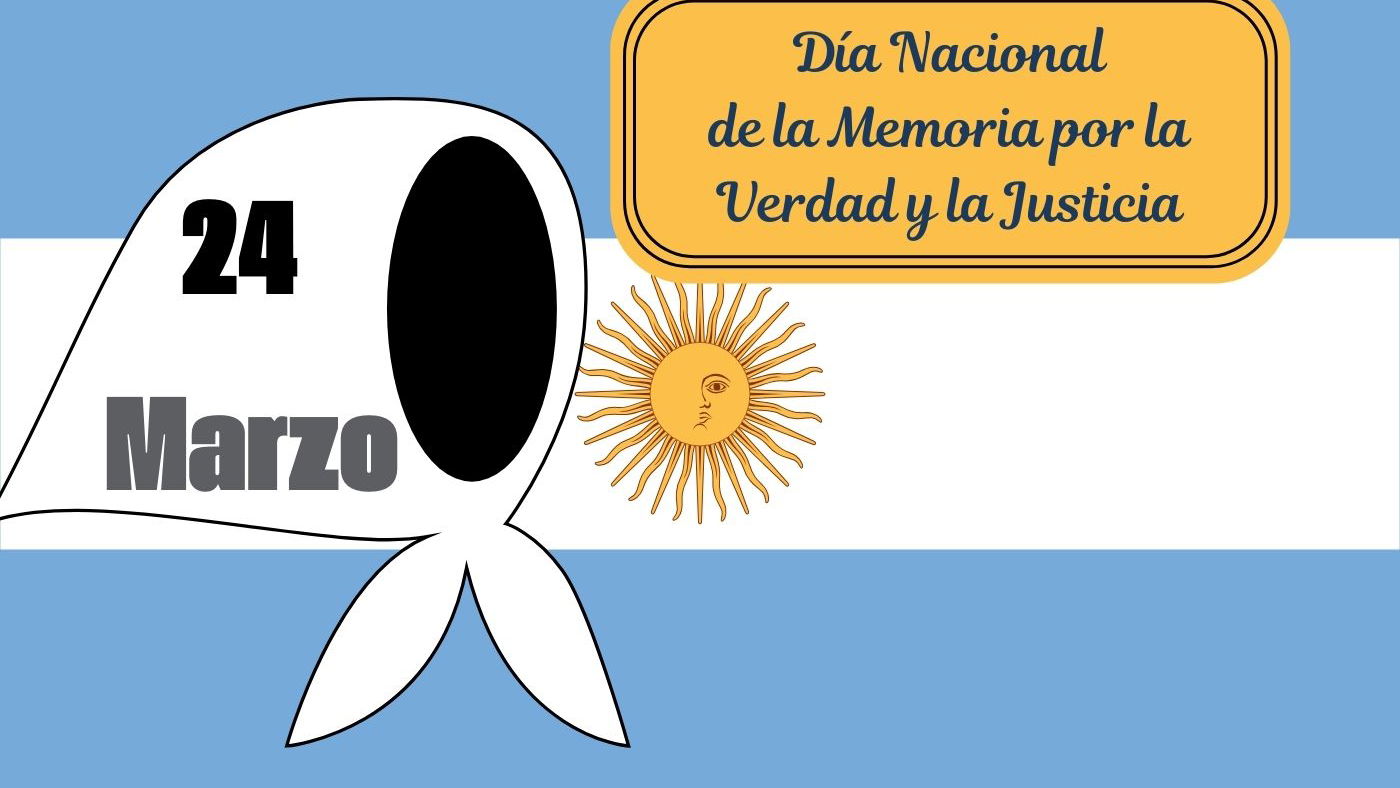






























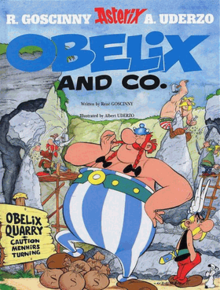





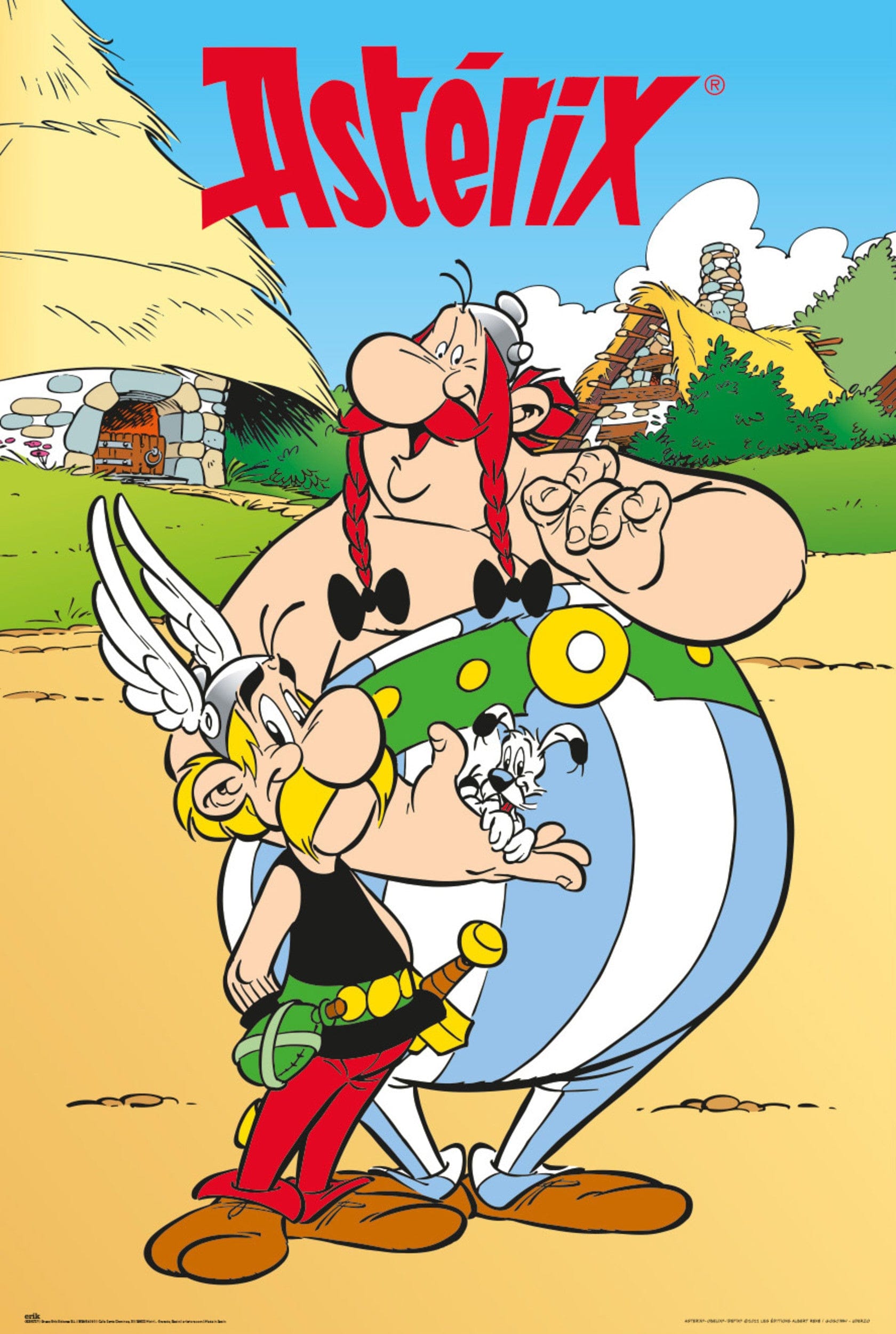
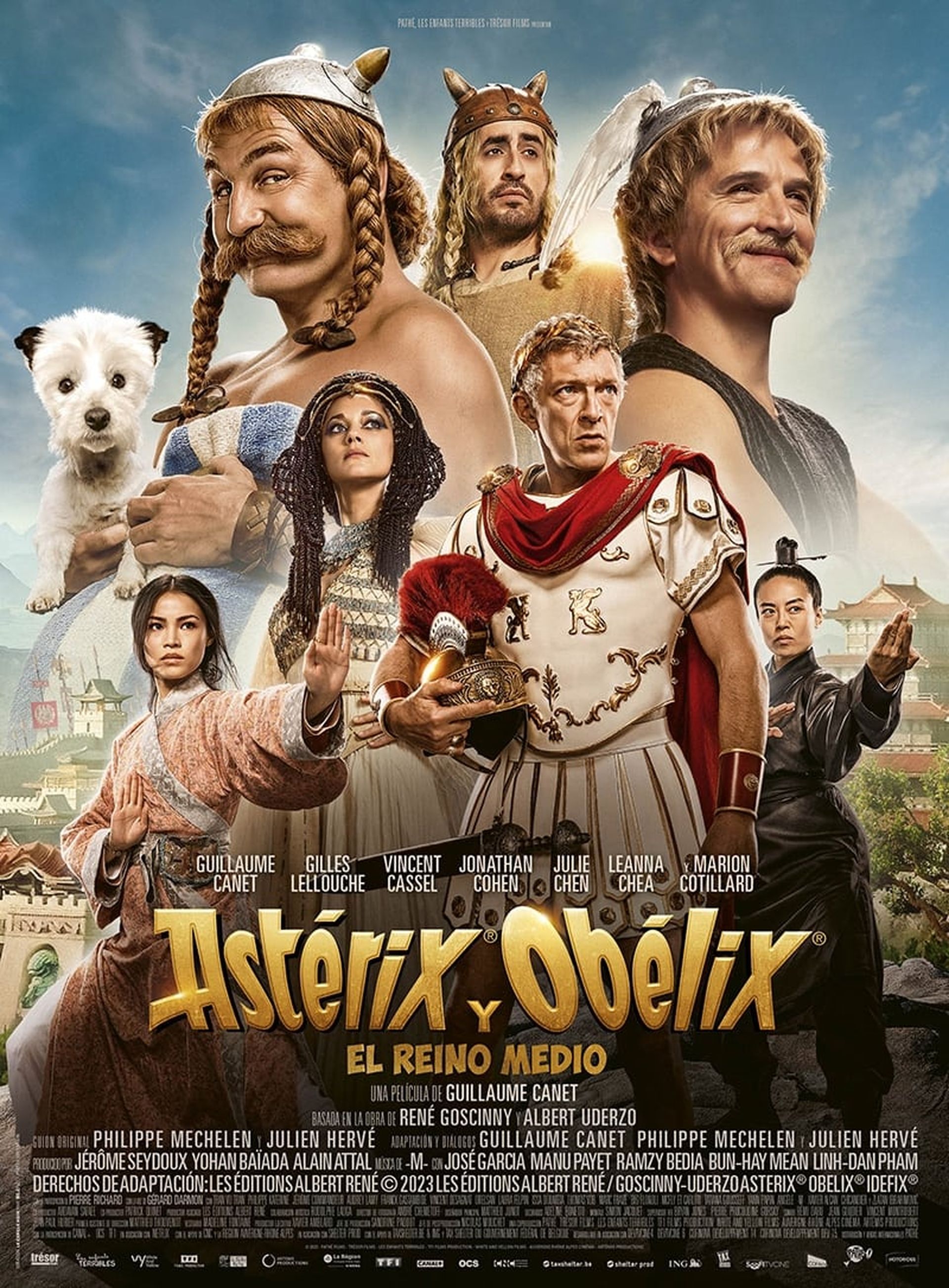
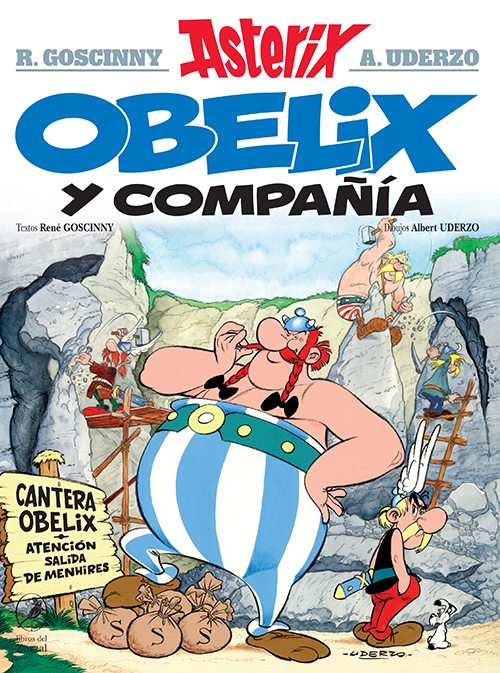


 Comparativa entre el Obelisco y el Monumento a la Bandera
Comparativa entre el Obelisco y el Monumento a la Bandera Obelisco desde Playa de Mayo y Granaderos – Buenos Aires, Argentina – Foto: Gustavo Sanchez
Obelisco desde Playa de Mayo y Granaderos – Buenos Aires, Argentina – Foto: Gustavo Sanchez El Obelisco de Buenos Aires – Importante monumento turístico – Foto: Nicolás Flor
El Obelisco de Buenos Aires – Importante monumento turístico – Foto: Nicolás Flor Monumento a la Bandera Rosario al caer la noche
Monumento a la Bandera Rosario al caer la noche El monumento a la bandera representa un barco. en la proa La libertad
El monumento a la bandera representa un barco. en la proa La libertad Monumento a la Bandera de Rosario de Noche
Monumento a la Bandera de Rosario de Noche


